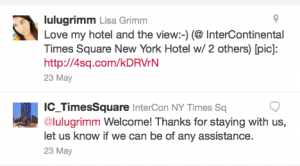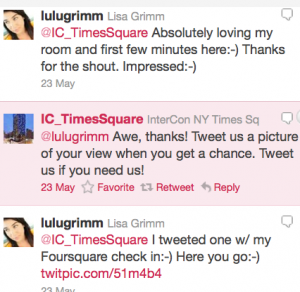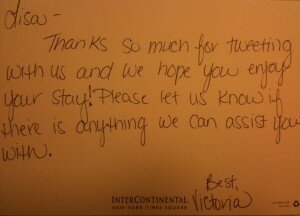Working in digital media is never dull. Not because technology changes so quickly, but because of what’s involved in implementing digital marketing communications into business. The strategic planning — determining the why and how to implement various digital touches to enhance key messages that thread throughout our respective businesses — that’s what makes it so interesting. The reality of this is rarely touched on. Instead, we hear social media successes and cases of digital excellence with little explanation of what it takes to be that great company, agency or non-profit doing such amazing work day-to-day.
This was the inspiration of the Community Management: How to Develop a Social Business Strategy presentation Bridget Jewell and I gave at MIMA Summit Workshops last Tuesday. When MIMA contacted me to speak, we were asked to speak about community management activities at Mall of America, which is a core function of our communications team and social media strategy. Instead, we really wanted share the story of how community management was the impetus for what is fast becoming a social business strategy and practice at MOA, with emphasis on successes as well as how incredibly difficult it can be. Here are a few presentation highlights:
Mall of America Gets Social: How an Online Community Was Discovered
Mall of America entered social media in a casual way in 2009… literally. Someone in marketing just decided to start a Facebook Group (it can be that simple). After a PR gal (Bridget Jewell) thought that there may be an opportunity for new engagement with a new audience, she sought to bring Facebook (converted to a page) into the corporate communications function. It was quickly realized after 15,000 people liked the Mall of America Facebook page in its first month that it was a medium in which some time should be spent. Between conversations on Facebook, Twitter and the MOA Fashion Sense Blog (now the MOA Blog), the community grew to 75,000 fans, 4,500 Twitter followers and regular comments to the blog in one year. A few things were quickly realized: A) We love helping, talking with and learning from our online community. B) Conversations, connections and power of technology have the ability to transform our business. C) More resources and structure need to be allocated toward this communication initiative.
Culture Is Key
I interviewed for my position at MOA when things were still very unclear in terms of what a ‘social media specialist’ should do for an organization (frankly, it’s still unclear most places). I noticed very quickly during the interview process that MOA leadership was behind and engaged with this function and role 100%. Among the most important questions (and really, requirements) – in addition to a brutal social media test that vetted knowledge and practical application – was that this person love the MOA brand and cultivate relationships with guests, prospective guests and internal audiences online and off.
Social Media Strategy
After getting settled, we embarked on developing the company’s social media strategy. The 20-page document lays over the company’s business goals, and more specifically MOA’s marketing communications goals because, and this is important, social media strategy is not a bolt on or something that should be yet another silo within an organization. It should work to complement everything else, and further, to actually accentuate and enhance it. In our presentation we gave the framework for how this strategy is outlined and examples of our own strategy and how it works from goal setting to measurement. The basics that you need to understand in order to plan anything are (see deck for MOA example):
- Goals – Define the big picture aim; your general intentions
- Objectives – Outcome that represent the achievement of your goal(s); THESE HAVE TO BE MEASURABLE
- Strategy – The action plan to reach the objective
- Tactics – Pieces and parts of strategy
- Measurement – What worked and what didn’t
- See our deck for MOA’s goals and examples of planning.
Internal Communication is Key
Before getting into tactics (the tools you’ll be using for marketing communications), it’s vital to make sure that key messages are aligned among communications, marketing, advertising (sales, customer service, HR, etc.) and hopefully everyone else in the company. THIS IS REALY HARD, especially depending on the size of the company, but if your strategy is buttoned up and internal communication is strong (or even somewhat strong), then the tools you use to execute your strategy will be more far more successful. Which brings me to social business strategy.
Social Media Strategy to Social Business Strategy
Community Management and many other strategic digital initiatives have us working across most departments in the company. As our community grows, we mine more and more information that affects all moving pieces of our business (leadership, marketing, operations, IT, legal, accounting, events, etc.). Our current planning and implementation has us developing a core group of stakeholders in the organization to align earned, owned and paid media functions with the end goal of creating a unified experience, whether you enter the doors of Mall of America, or our doors online.
Here’s our deck and a little recap video courtesy of Minnov8. I’d love to hear your thoughts or any questions. Happy Friday:-).
P.S. I can’t stress enough how amazing MIMA Summit is, with a special shout out to content coordinators Julie Kosbab and Lauren Melcher. It’s one of the most fabulous and well produced conferences in the country. Thrilled it’s in my own backyard. Thank you for inviting me to speak – and to the entire team that produces the event.








 I create purpose-driven experiences that establish meaningful connections between people and brands through the convergence of technology and communication.
I create purpose-driven experiences that establish meaningful connections between people and brands through the convergence of technology and communication.





